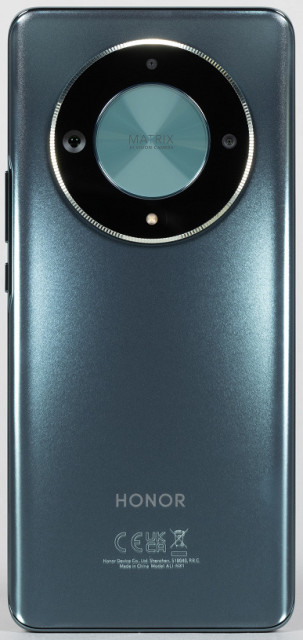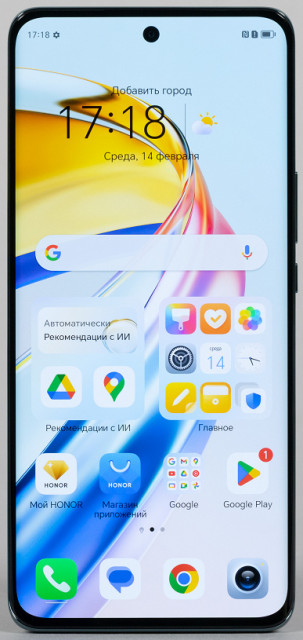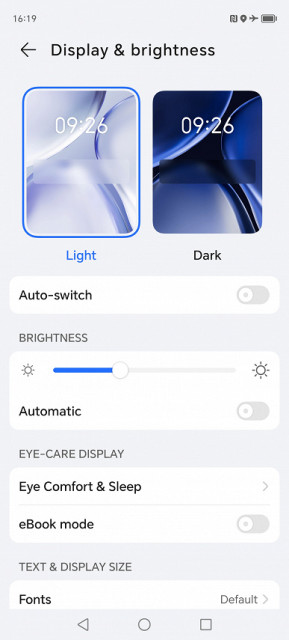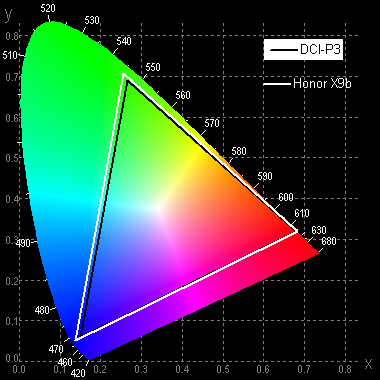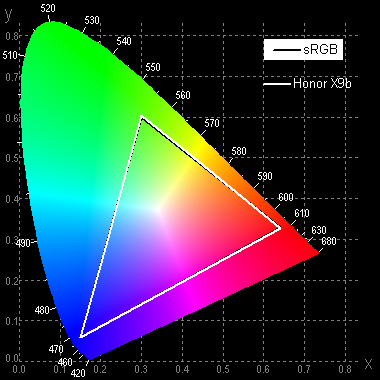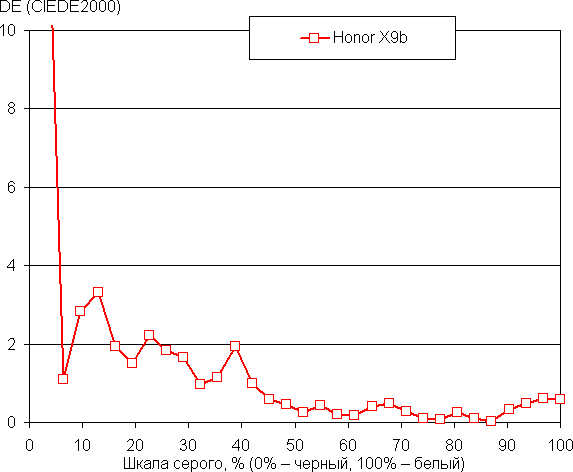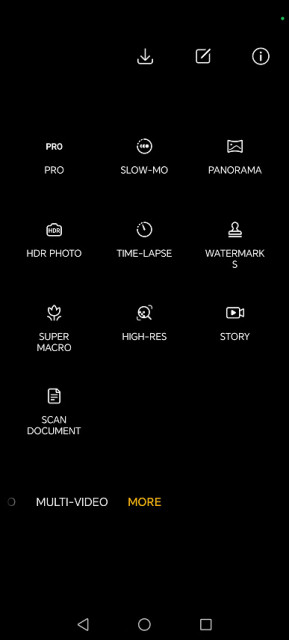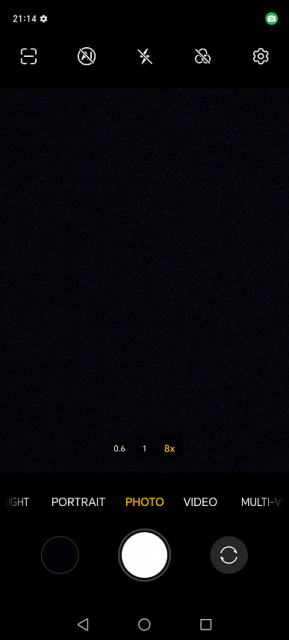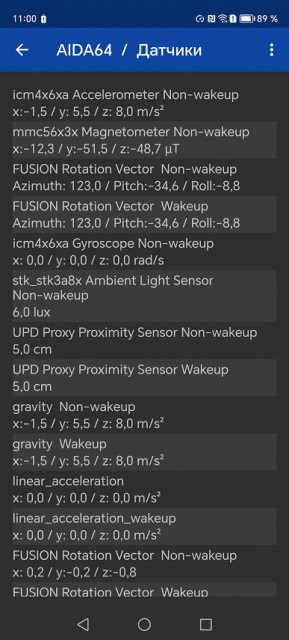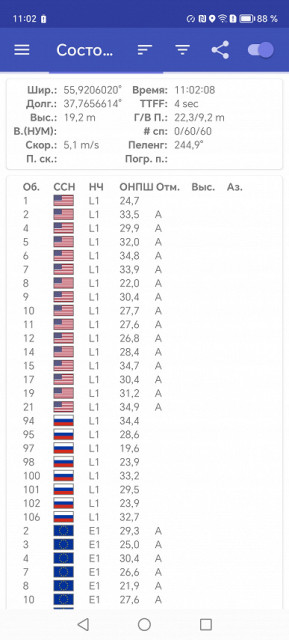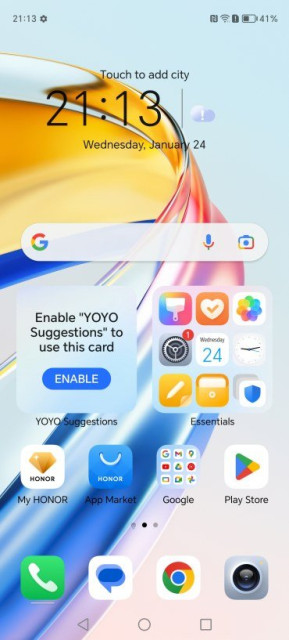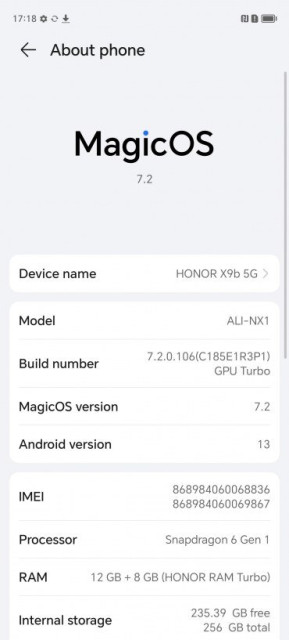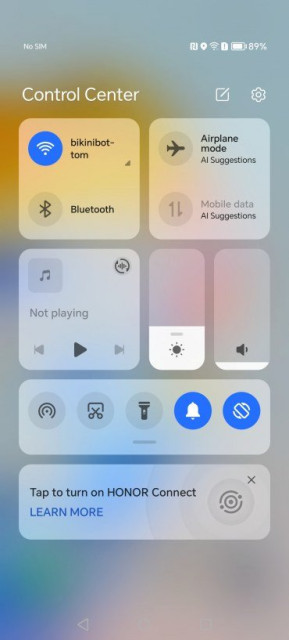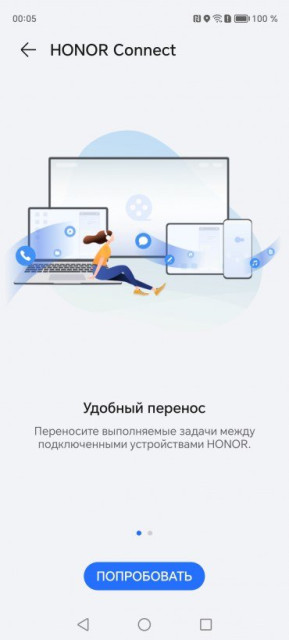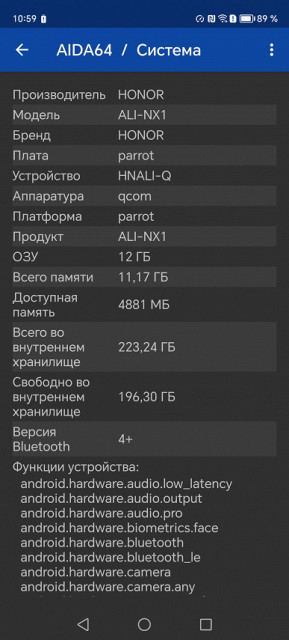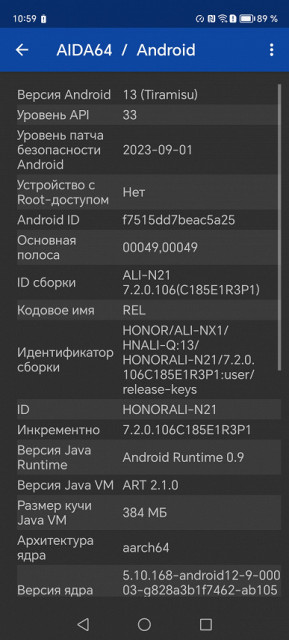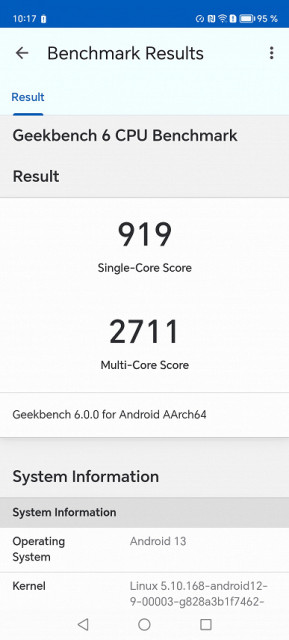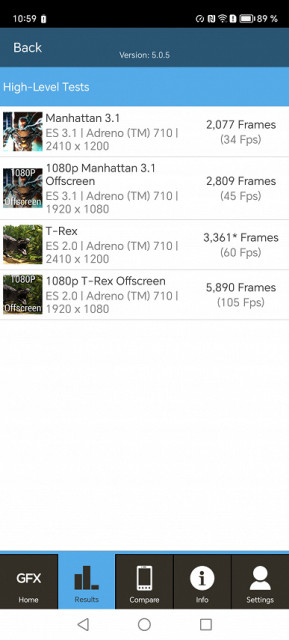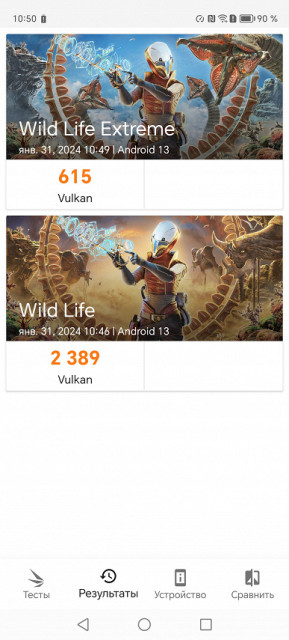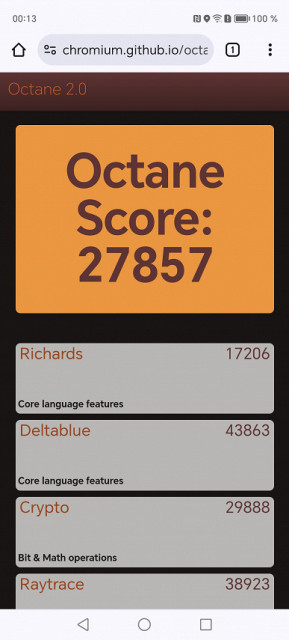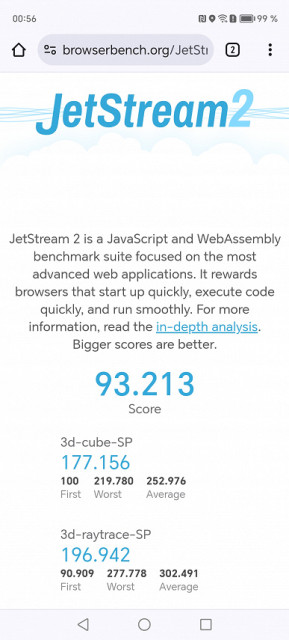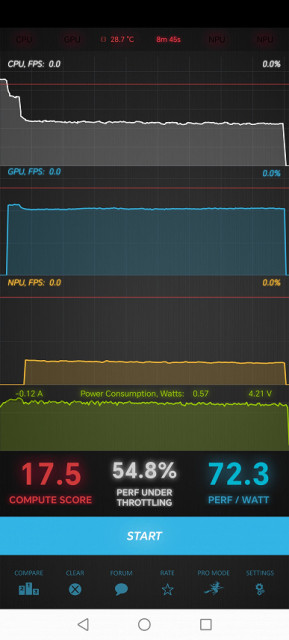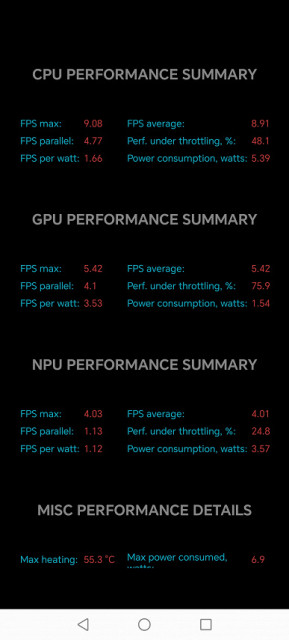Honor X9b is the latest model in the mid-range line from the famous Chinese brand. The device stands out for its original case design, the use of the mid-level Qualcomm platform, a high-quality camera and an extensive set of network modules.
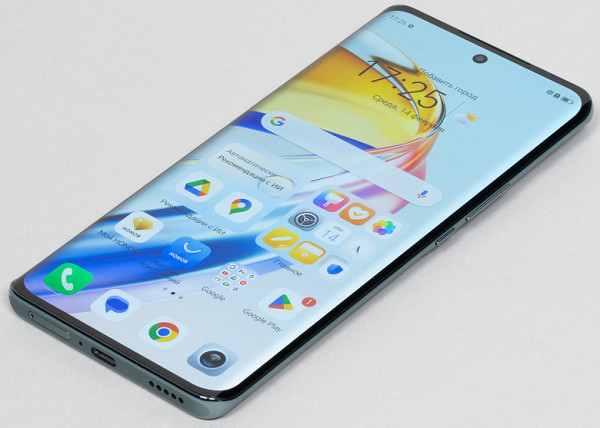
Main characteristics of Honor X9b (model ALI-NX1)
- SoC Qualcomm SM6450 Snapdragon 6 Gen1, 8 processor cores (4×Cortex-A78 @2.2 GHz + 4×Cortex-A55 @1.8 GHz)
- GPU Adreno 710
- Operating system Android 13, Magic UI 7.2
- Touch display AMOLED, 6.78″, 1220×2652, 19.5:9, 431 ppi, 120 Hz
- RAM 8/12 GB, internal memory 256 GB
- No microSD support
- Nano-SIM support (2 pcs.)
- Networks 2G GSM, 3G WCDMA, 4G LTE, 5G
- GPS, Glonass, BDS, Galileo and QZSS
- Wi-Fi 5 (2.4 and 5 GHz)
- Bluetooth 5.2, A2DP, LE
- NFC
- USB 2.0 Type-C, USB OTG
- There is no 3.5mm audio output for headphones
- Cameras 108 MP + 5 MP + 2 MP, video 4K@30 fps
- Front camera 16 MP
- Proximity and lighting sensors, magnetic field, accelerometer, gyroscope
- Fingerprint scanner (under the screen)
- Battery 5800 mAh, charging 35 W
- Dimensions 164×76×8 mm
- Weight 185 g
Appearance and ease of use
The Honor X9b smartphone comes in a hard cardboard package with a discreet design.

The package includes a network adapter with an output power of 35 W (maximum mode 11 V at 3.2 A), a connecting cable, wired headphones and a flexible transparent case.
The design of the smartphone features rounded front and back panels, strongly curved edges on the sides, a comfortable and ergonomic side frame, as well as a characteristic curved “waterfall screen”, which, however, can cause some problems for users.
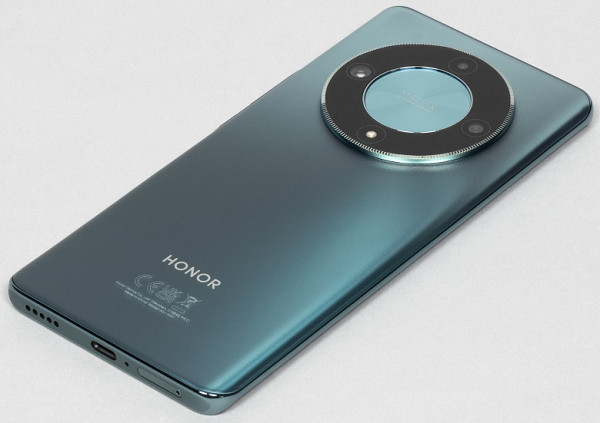
The smartphone has a wide and long body, while it is quite thin, approximately 8 mm, and lightweight, weighing only 185 g. Due to the tapering edges, it is perceived as even slimmer than it actually is. The thin bezel around the screen allows the 112.6 cm² screen to cover 91.2% of the device's front panel.
The panel on the back of the smartphone is covered with a matte, non-markable coating, while the sides are smooth and slippery. Using the device without a case is not very practical, so it is recommended to immediately protect it with a case.

The configuration of the cameras on the back of the device is made in an unusual style: although it has the usual round shape, the manufacturer has visually simplified the design, giving the central part some “painted over” lightness. Around this “donut” there are three camera modules and a bright LED flash. This solution gives the smartphone an overall appearance of lightness, and the design seems complete.
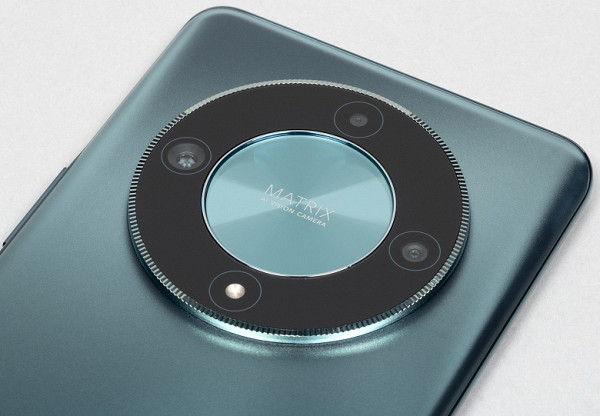
The cameras on the rear protrude slightly, the smartphone lies more or less stable on a hard surface.

The complete case is flexible and transparent, the most ordinary one.
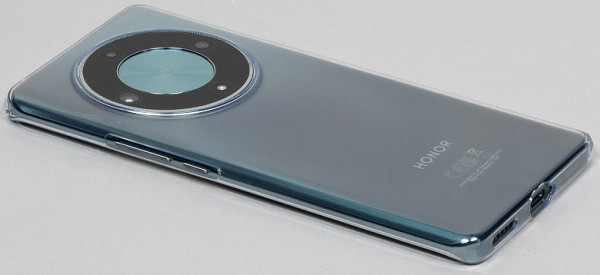
The side buttons are on the right, the keys are thin and moderately elastic, there are no complaints about them.
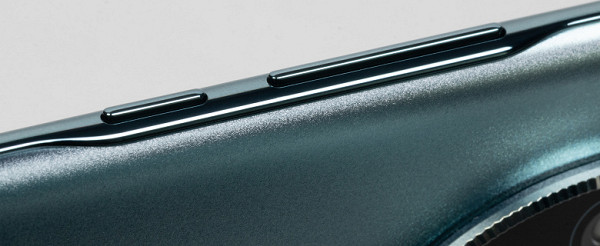
The fingerprint scanner is located under the glass of the screen at the bottom of the device. The optical sensor provides acceptable response speed, but does not exceed the speed of a standard capacitive scanner.

The selfie camera is single, its eye is installed behind a circular cutout in the screen matrix right in the center of the top edge.
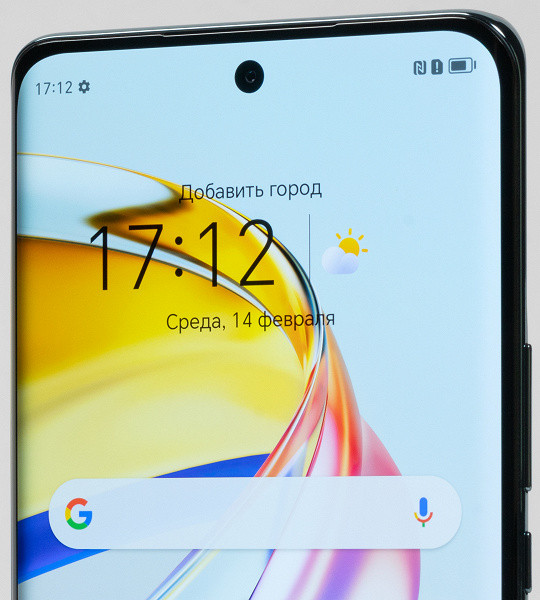
The slot on the bottom can accommodate two Nano-SIM cards (on one side and the other side of the sled). Installing a microSD memory card is not supported.

Here, on the bottom end, there is a speaker, microphone and USB Type-C connector. There is no output to the 3.5 mm audio jack of a wired headset.

The top end contains only a hole for an additional microphone.

The Honor X9b smartphone is available in black, green and orange designs. The orange version features an eco-leather back panel and a golden side frame. The device provides protection at the IP53 level, which means it is resistant to dust (within certain parameters) and splashes falling vertically or at an angle of up to 60 degrees.
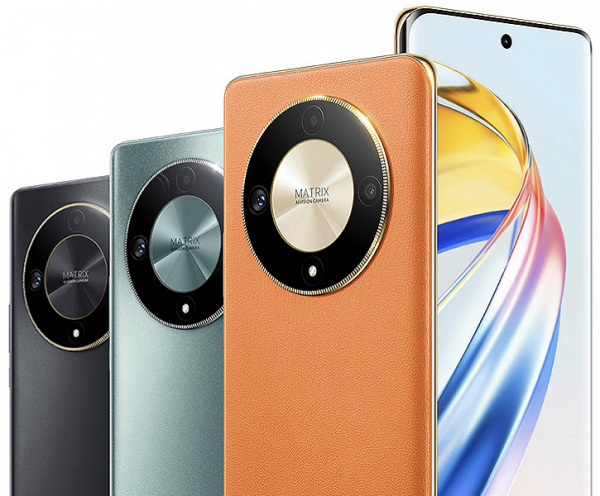
Screen
The Honor X9b smartphone is equipped with a 6.78-inch AMOLED display with a resolution of 1220×2652 pixels. The screen is protected by curved glass. The physical dimensions of the screen are 71x157 mm, and the aspect ratio is 19.5:9, providing a pixel density of 431 ppi. A thin frame surrounds the screen by 2 mm on the sides, 3 mm on the top and 3.5 mm on the bottom. The display supports a 120Hz refresh rate.
The front side of the screen is made in the form of a glass plate with a smooth, scratch-resistant surface. The anti-glare properties of the screen are superior to those of the Google Nexus 7 (2013). The outer surface of the screen has an oleophobic (grease-repellent) coating that is more effective than that found on the Nexus 7, making fingerprints easier to remove and appearing slower than regular glass.
When displaying a white field on the entire screen and manually controlling the brightness, the maximum value reached 570 cd/m² in normal conditions, and in bright light it could rise to 950 cd/m². The maximum brightness is very high. Given that less white on the screen makes it lighter, the actual maximum brightness of white areas is almost always higher than these values. Good screen readability in the sun is ensured by excellent anti-glare properties. The minimum brightness value is 2 cd/m², which allows you to use the device even in complete darkness. The automatic brightness adjustment function based on the light sensor (located under the screen at the top right of the front camera) adequately responds to changes in lighting conditions. As a result of this function, the screen brightness in office lighting conditions is set to 160 cd/m², in a bright environment it increases to 950 cd/m² (maximum). After some adjustments, we achieved values of 15, 140 and 950 cd/m² in complete darkness, medium and bright light respectively.
At high and medium brightness levels, modulation with a frequency of 60 or 120 Hz is observed. Below are graphs of brightness versus time for several brightness levels at a refresh rate of 60 Hz.
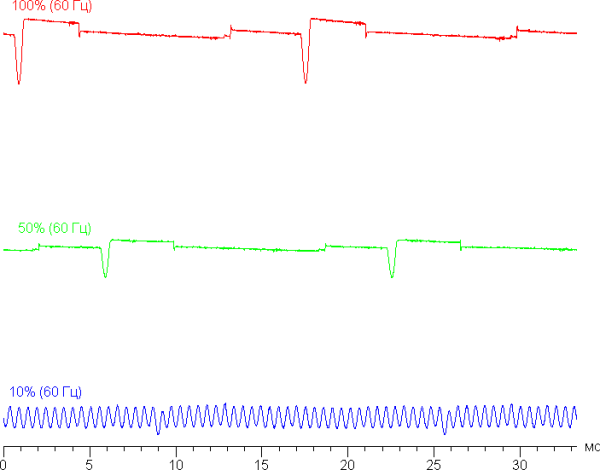
It is obvious that at high and medium brightness the modulation frequency increased by 2 times (compared to the 60 Hz mode), and at low brightness the modulation character remained the same. There is still no visual flicker observed.
In the screen settings it is possible to activate a mode with an increased refresh rate of up to 120 Hz:

Obviously, with the 120Hz screen refresh rate enabled, scrolling smoothness increases significantly. Let's check whether this changes the nature of the modulation. 120Hz mode:
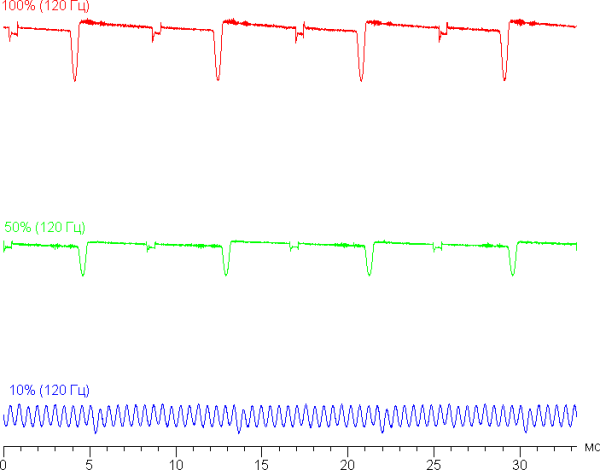
In this fragment you can see 4 green subpixels, 2 red (4 halves) and 2 blue (1 whole and 4 quarters), and by repeating these fragments, you can fill the entire screen without gaps or overlaps. For such matrices it is customary to use the term «PenTile RGBG». With this configuration, the screen resolution is measured by the green subpixels, while the other two will be lower. Despite some unevenness in contrast margins, image quality remains minimally affected thanks to the high resolution. The screen has excellent viewing angles, where the white color, even at large angles, retains its hue, which is an uncommon occurrence for OLED technology. Black remains true black from all angles, highlighting high contrast.
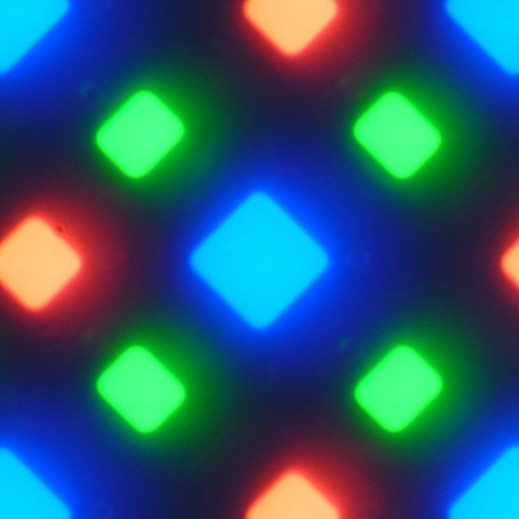
This fragment shows 4 green subpixels, 2 red (4 halves) and 2 blue (1 whole and 4 quarters), and by repeating these fragments, you can cover the entire screen without gaps or overlaps. This type of matrix is often referred to as «PenTile RGBG», where the screen resolution is measured by the number of green subpixels, while it will be lower for the other two colors. Although there are some artifacts in contrast edges, due to the high resolution they have minimal impact on image quality.
The screen has excellent viewing angles. Even at large deflection angles, the white color remains virtually unchanged, which is rare for OLED technology. Black maintains its depth at all angles, highlighting high contrast. Indeed, the contrast parameter in this case becomes irrelevant. For a visual comparison, we present photographs in which the screens of a smartphone and another device display the same images. The brightness of the screens is initially set to approximately 200 cd/m², and the color balance of the camera is forced into 6500 K mode.
White field (Vivid [colors] profile):
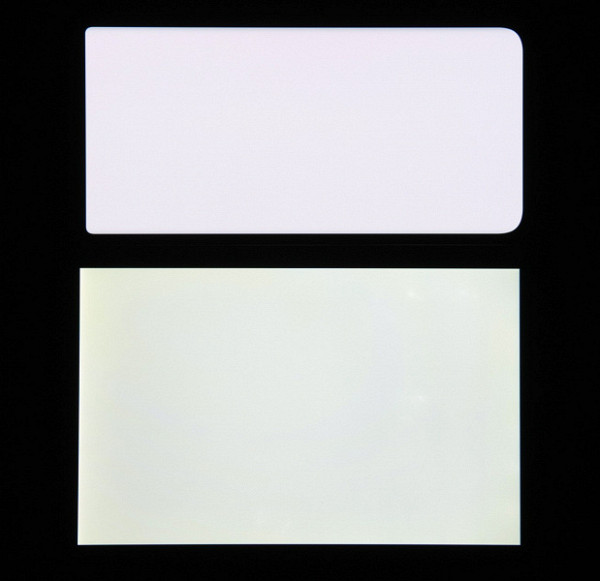
We emphasize the good uniformity of brightness and color tone of the white field, with the exception of possible darkening and changes in hue in the area of the curved edges.
Let’s also take a look at the test picture (Regular [colors] profile):

Color reproduction on both screens is good, providing moderate saturation. However, color balance varies slightly between screens. It is important to note that photography is not an ideal source for assessing color rendering quality and is provided for illustrative purposes only. For example, a pronounced reddish tint in white and gray fields seen in photographs of a smartphone screen may not be as visually noticeable when viewed from a perpendicular perspective, as confirmed by hardware tests, including the use of a spectrophotometer.
This is explained by the fact that the spectral sensitivity of the camera matrix does not completely coincide with human vision. Additionally, an image that fills the entire vertical area of the screen (in landscape orientation) may cause slight darkening and color distortion at the curved edges of the screen. Also, when viewing images full screen, where part of the image overlaps the curved edges, distortion and darkening may occur. This issue also affects viewing videos with a 16:9 aspect ratio, where the image may overlap the edges of the screen, making viewing difficult.
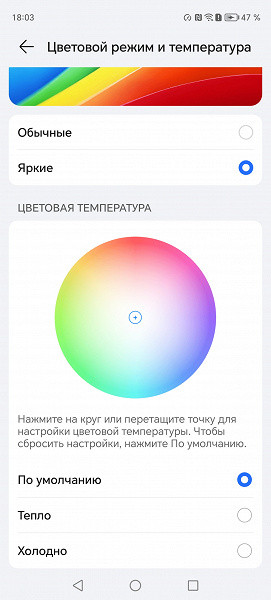
The Vivid [colors] profile (selected by default) has color balance and increased color saturation:

Both screens show a noticeable drop in brightness when viewed at an angle, but the smartphone screen exhibits a significantly smaller drop in brightness. As a result, despite formally the same brightness, the smartphone screen visually appears brighter, especially when compared with LCD screens, since the user often looks at the mobile screen at a slight angle.
Switching the state of the matrix elements occurs almost instantly, however, a step lasting about 17 ms (which corresponds to a screen refresh rate of approximately 60 Hz) or approximately 8 ms (120 Hz) may appear at the turn-on edge. This is roughly what the change in brightness looks like over time when moving from black to white:
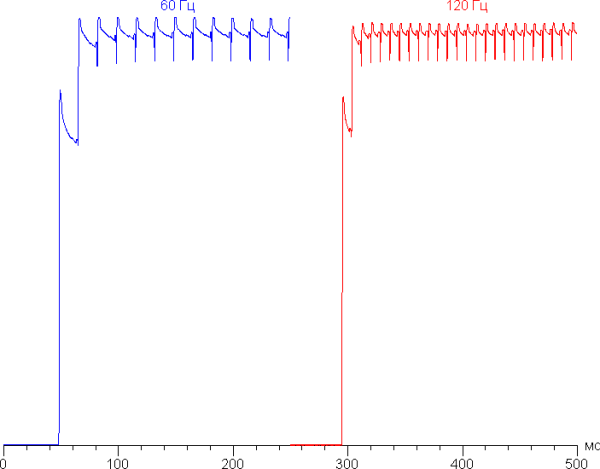
In the presence of the specified step, under certain conditions, the effect of trails that trail behind moving objects may occur.
A gamma curve based on 32 points with an equal interval of numerical values of shades of gray did not reveal significant deviations in either light or dark areas. The exponent of the approximating power function is 2.24, which is close to the standard value of 2.2. However, the actual gamma curve deviates slightly from the power law.

As a reminder, OLED screens dynamically adjust the brightness of parts of the image depending on the nature of the content being displayed, resulting in a slight dimming for areas with bright content. As a result, the brightness versus hue curve (gamma curve) probably does not correspond to the gamma curve of a static image, since the measurements were taken with sequential grayscale output across almost the entire screen.
The color gamut for the Vivid profile is significantly wider, surpassing DCI-P3, while for the Normal profile it is close to sRGB.
Without correction (the Bright option), the spectra of the components (that is, the spectra of pure red, green and blue colors) are very well separated:
![Bright colors]](https://cavuun.com/files/images/blog/212v44725c.png)
Bright colors]
In the case of a profile, the usual color components are mixed with each other to a large extent:
![Regular [colors]](https://cavuun.com/files/images/blog/212v2bf151.png)
Regular [colors]
It is noted that on displays with a wide color gamut (without appropriate correction), the colors in regular images optimized for sRGB devices may appear overly saturated. Because of this, we recommend using the Normal profile when viewing most content, such as movies and photos.
The device provides the ability to correct color balance by selecting a color temperature profile or adjusting the hue on the color wheel. Even without profile adjustment, Normal provides a good balance of gray scale hues as the color temperature is close to the standard 6500K and the blackbody deviation (ΔE) remains below 10 units, which is considered acceptable for consumer devices. At the same time, color temperature and ΔE practically do not change from hue to hue, which has a positive effect on the visual assessment of color balance.
Of course, there is a function to reduce the intensity of the blue component:

In general, strong light can disrupt the circadian rhythm, but adjusting the brightness to a comfortable level can solve this problem, and there is no need to distort the color balance by reducing the contribution of blue light.
This device does not seem to support DisplayPort Alt Mode for USB Type-C, which means it cannot output image or audio to an external device via USB (according to USBTreeView).
To summarize, the screen has a high maximum brightness (950 cd/m²) and good anti-glare properties, which allows you to use the device even in bright sunlight. Adjusting the brightness to a comfortable level is also possible in complete darkness (up to 2 cd/m²). The mode with automatic brightness adjustment works adequately. Additional benefits include an effective oleophobic coating, no flicker, a high refresh rate (120 Hz), as well as a near-sRGB color gamut and good color balance when selected correctly. In addition, there are general advantages of OLED screens, such as true blacks and less noticeable drop in brightness when viewed from an angle. The image quality is rated as very high. It is noticeable that curved edges can have negative effects on color balance and reduce brightness at the edges of the image, especially in ambient light.
Camera
The Honor X9b smartphone is equipped with a circular set of three cameras and a bright LED flash on the back.
- 108 MP, 1/1.67″, f/1.8, PDAF (main)
- 5 MP, f/2.2 (wide-angle)
- 2 MP, f/2.4 (macro)
The main camera is equipped with fast and effective phase detection autofocus, but there is no optical stabilizer. By default, pictures are taken at 12 megapixels using the pixel binning feature. It is possible to switch to shooting in full 108 megapixel resolution, which, in principle, brings a slight increase in detail, but most often does not justify this choice.
The camera provides high quality shooting both in good lighting and in low light conditions. The pictures have good detail, sharpness and a wide dynamic range, without overexposure or loss in dark areas. While there may be some loss of clarity towards the edges of the image, and default colors are a bit oversaturated, overall the camera's shooting quality is rated as acceptable for its class.
The wide-angle module typically produces images that are lower in detail and darker, with some blurring around the edges of the frame. The critically positive reviews about this camera are not very justified.


The selfie camera is simple, featuring a 16-megapixel sensor and an f/2.5 lens. The images produced by this camera are characterized by average detail and color saturation. The camera does not have autofocus.
The smartphone is capable of recording video in resolutions up to 4K at 30 frames per second, and does this efficiently both during daylight hours and in low light conditions. Video footage is highly detailed, sharp and clear, and electronic stabilization ensures relatively smooth shooting on the go. The image is bright, contrasty, without overexposure or color loss. The overall quality of video recording is rated as high, although some users may find the 60fps mode unsatisfactory. Sound recording is also of excellent quality.
Telephone and communications
Telephone and communicationsThe network capabilities of a smartphone represent a high level of functionality. The device supports most 4G and 5G mobile network bands, ensuring reliable operation in wireless networks within the city limits of the Moscow region. The smartphone demonstrates a reliable connection, quickly restoring it after a break.
The device also contains a wireless adapter with support for Wi-Fi 5 and Bluetooth 5.2, as well as NFC support. However, it should be noted that there is no support for Wi-Fi 6 and e-SIM.
The smartphone is equipped with a single-channel satellite navigation module that successfully interacts with GPS, Glonass, BDS, Galileo and QZSS. Fast satellite search and high positioning accuracy make it efficient to use.
Voice communication in the dynamics is loud and clear, the vibration alert is of medium strength. Built-in sensors including a gyroscope are also present.
Software and multimedia
The sound from the smartphone's single speaker is loud and clear. When using headphones, the sound is also of high quality, and there is support for Honor Histen audio effects. It is worth noting that there is no 3.5mm audio output for wired headphones.
Performance
The Honor X9b smartphone is equipped with an octa-core Qualcomm SM6450 Snapdragon 6 Gen1 processor with Adreno 710 GPU. The RAM capacity is 8 or 12 GB, and the built-in storage is 256 GB. The device does not support installing a memory card, but provides the ability to connect external devices to the USB Type-C port in USB OTG mode.
The platform is manufactured according to the 4 nm process technology, representing a low-mid-level productive solution. It reaches more than 500 thousand points in AnTuTu, which provides sufficient performance to perform various tasks and comfortable work with the interface. The smartphone is capable of providing smooth gameplay in most games, even if the graphics settings are reduced slightly. In general, a worthy platform has been chosen for a device in this price segment.
Testing in comprehensive tests AnTuTu and GeekBench:
To make it easier to understand, the smartphone testing results were presented in tables, including several other devices from different segments. All devices were tested on the most current versions of popular benchmarks. It is important to note that it is not possible to include results from different versions of benchmarks within a single comparison, which may result in some decent and relevant models being left out of this comparison due to previous versions of the benchmark programs.
| Honor X9b (Qualcomm Snapdragon 6 Gen1) | Vivo V29 (Qualcomm Snapdragon 778G) | Tecno Camon 20 Pro 5G (Mediatek Dimensity 8050) | Vivo V27 (Mediatek Dimensity 7200) | Infinix GT 10 Pro (Mediatek Dimensity 8050) | |
|---|---|---|---|---|---|
| AnTuTu (v9.x) (bigger is better) | 511879 | 544922 | 686367 | 602528 | 693101 |
| GeekBench 6 (bigger is better) | 919/2711 | 1022/2946 | 1141/3216 | 1198/2686 | 1087/3192 |
Testing the graphics subsystem in 3DMark and GFXBenchmark gaming tests:
| Honor X9b (Qualcomm Snapdragon 6 Gen1) | Vivo V29 (Qualcomm Snapdragon 778G) | Tecno Camon 20 Pro 5G (Mediatek Dimensity 8050) | Vivo V27 (Mediatek Dimensity 7200) | Infinix GT 10 Pro (Mediatek Dimensity 8050) | |
|---|---|---|---|---|---|
| 3DMark Wild Life Extreme Vulkan (bigger is better) | 615 | 687 | 1307 | 1165 | 1316 |
| 3DMark Wild Life Vulkan (bigger is better) | 2389 | 2482 | 4538 | 4186 | 4509 |
| GFXBenchmark Manhattan ES 3.1 (Onscreen, fps) | 34 | 37 | 79 | 59 | 78 |
| GFXBenchmark Manhattan ES 3.1 (1080p Offscreen, fps) | 45 | 57 | 91 | 68 | 90 |
| GFXBenchmark T-Rex (Onscreen, fps) | 60 | 98 | 120 | 110 | 120 |
| GFXBenchmark T-Rex (1080p Offscreen, fps) | 105 | 134 | 198 | 160 | 211 |
Testing in browser cross-platform tests:
| Honor X9b (Qualcomm Snapdragon 6 Gen1) | Vivo V29 (Qualcomm Snapdragon 778G) | Tecno Camon 20 Pro 5G (Mediatek Dimensity 8050) | Vivo V27 (Mediatek Dimensity 7200) | Infinix GT 10 Pro (Mediatek Dimensity 8050) | |
|---|---|---|---|---|---|
| Google Octane 2 (bigger is better) | 27857 | 30233 | 33129 | 29329 | 30618 |
| JetStream (bigger is better) | 93 | 69 | 73 | 87 | 70 |
AndroBench memory speed test results:
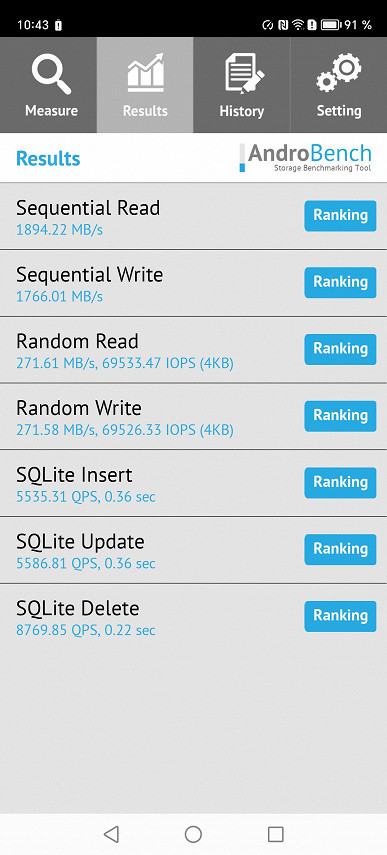
Heat
We test for performance degradation when heated using the Burnout Benchmark program, which allows you to load the CPU, GPU and NPU:
| Stress on | Heating performance as a percentage of maximum |
|---|---|
| CPU | 48% |
| GPU | 76% |
| NPU | 25% |
Battery life
The Honor X9b smartphone is equipped with a high-capacity battery – 5800 mAh. During the tests, the device demonstrated an impressive level of autonomy, close to a record one. This smartphone is one of the longest-lasting devices on the market today.
Testing was carried out at the standard power consumption level without using the power saving features, although they are also present in the device. Test conditions included a minimum comfortable brightness level (approximately 100 cd/m²). Tests performed included continuous reading in Moon+ Reader using the standard light theme, continuous viewing of HD video (720p) over a home Wi-Fi network, and Injustice 2 with automatic graphics settings.
| Battery capacity | Reading mode | Video mode | 3D Game Mode | |
|---|---|---|---|---|
| Honor X9b | 5800 mAh | 25 h. 00 m. | 22 h. 00 m. | 9 h. 00 m. |
| Vivo V29 | 4600 mAh | 21 h. 00 m. | 19 h. 00 m. | 8 h. 30 m. |
| Infinix GT 10 Pro | 5000 mAh | 20 h. 30 m. | 18 h. 00 m. | 8 h. 30 m. |
| Tecno Camon 20 Pro 5G | 5000 mAh | 19 h. 00 m. | 16 h. 00 m. | 7 h. 00 m. |
| Vivo V27 | 4600 mAh | 25 h. 00 m. | 19 h. 00 m. | 7 h. 00 m. |
| Poco X5 Pro 5G | 5000 mAh | 18 h. 00 m. | 20 h. 00 m. | 7 h. 00 m. |
| Realme 10 Pro+ 5G | 5000 mAh | 19 h. 00 m. | 18 h. 00 m. | 5 h. 00 m. |
| Xiaomi 12T | 5000 mAh | 19 h. 00 m. | 16 h. 00 m. | 6 h. 00 m. |
| Nothing Phone (1) | 4500 mAh | 15 h. 00 m. | 16 h. 00 m. | 5 h. 00 m. |
All figures presented are the maximum possible results achieved under «ideal» conditions, including no SIM cards installed. Any changes to the use case will likely cause these results to deteriorate.
Using the standard wall charger included in the kit, the smartphone can be charged in an hour and a half. Wireless charging is not supported on this device.
Bottom line
The Honor X9b fits perfectly into its price segment, providing an adequate Qualcomm hardware platform, an excellent AMOLED screen that may have curved edges, but this gives it a more striking look. In addition, the device is equipped with a very good main camera, capable of high-quality photos and videos. The high level of autonomy and fast charging for the capacious 5800 mAh battery make it attractive in this aspect. Honor emphasizes screen protection using «ultra-durable» Ultra-Bounce glass, and although we didn't perform destructive experiments, not a single scratch, not even a minor one, appeared on the Honor X9b's screen after several weeks of use. Support for 5G networks also provides owners of this model with a promising solution for future technological changes.

